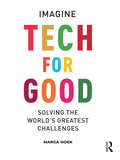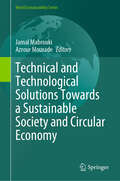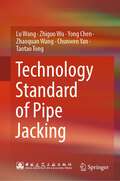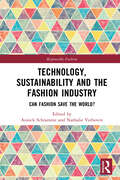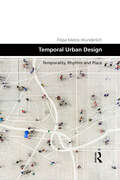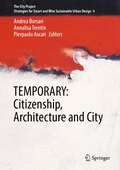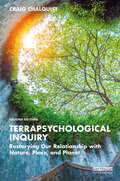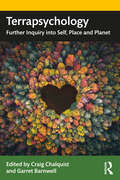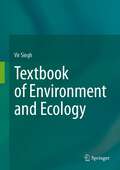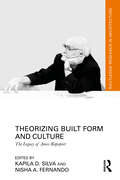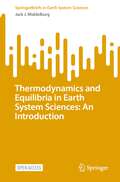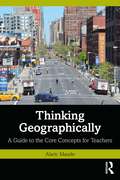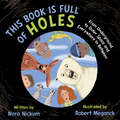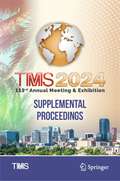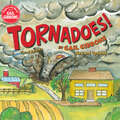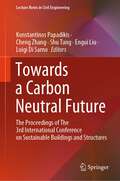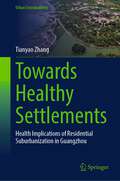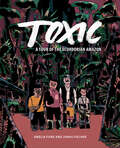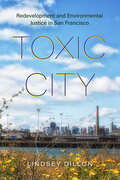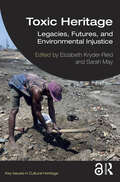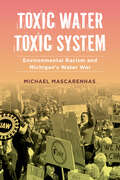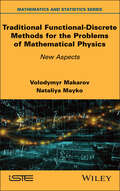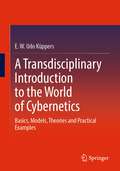- Table View
- List View
Tech For Good: Imagine Solving the World’s Greatest Challenges
by Marga HoekTech For Good reveals how Fourth Industrial Revolution technologies will help solve the world’s greatest challenges like climate change, biodiversity loss, inequality, and poverty. Tech For Good presents a unique perspective on how business can successfully apply advanced technologies in a purpose-driven manner while unlocking new markets and seizing business opportunities. Packed with 75 real-life business cases of companies from all over the world, this inspiring book unfolds a compelling narrative about how businesses commercially synergize technology and sustainability. The purpose of this book is to imagine the unprecedented possibilities advanced technologies offer business to drive sustainable growth. Tech for Good will be vital for realizing our Global Goals.
Technical and Technological Solutions Towards a Sustainable Society and Circular Economy (World Sustainability Series)
by Jamal Mabrouki Azrour MouradeResource depletion and ecological risks are more than ever at the heart of societal and economic debates. In the 1970s, the developed countries saw the Fordist growth regime crumble in parallel with the growing awareness of the ecological issue. Since the first industrial revolutions, technological dynamics have been the cause of many environmental problems, and there is a consensus on the diagnosis. Integrated technologies reduce resource use and/or pollution at source by using cleaner production methods. This generally leads to a reduction in the by-products, energy inputs and resources used by companies to produce goods.Integrated production technologies reduce negative environmental impacts at source by substituting or modifying cleaner technologies. Examples of integrated, or cleaner, production technologies are the recirculation of materials, the use of environmentally friendly materials (such as the substitution of water for organic solvents), etc. However, the implementation of integrated production technologies is often hampered by obstacles related to cost, coordination and skill inertia problems and to the productive organisation of companies. In addition to the high investment costs of new integrated technologies, additional barriers may emerge depending on the nature of the environmental problem and the type of environmental regulation in question.
Technology Standard of Pipe Jacking
by Lu Wang Zhiguo Wu Yong Chen Zhaoquan Wang Chunwen Yan Taotao TongThis book summarizes the technical method and construction process of pipe jacking. It has a total of 17 chapters and one appendix. It includes how to prepare the pipe jacking construction, how to choose the pipe and equipment for jacking, how to choose the engineering environment, how to do the geological survey before jacking, how to design the working pit, what's the procedure of pipe jacking, how to do the measurement and monitoring during jacking, how to do the treatment and acceptance after jacking, and so on. Appendix contains reference tables for pipe jacking archives, which might aid readers in understanding the book's content. This book's language is simple to read, and it has a wealth of graphics. Even those without a foundational understanding of pipe jacking could read and comprehend it with ease. This regulation could be the fundamental discipline for pipeline jacking projects. It is the important basis and criterion for the design, construction, management, inspection, and acceptance of pipeline jacking.
Technology, Sustainability and the Fashion Industry: Can Fashion Save the World? (Responsible Fashion)
by Annick Schramme Nathalie VerbovenThere is widespread rhetorical agreement that the fashion industry must get itself onto a more sustainable footing. What does this mean in practice, and how can sustainability be achieved in different regions around the world? This book brings together expert scholars and reflective practitioners via a network of dialogue and exchange to help drive forward a sustainable future for the fashion industry. With a focus on technological innovation, the contributions to this book provide a range of case studies from design thinking, through digital clothing and inclusive fashion. This book will be of interest to researchers and scholars in the fields of circular business and the fashion industry, and provides a unique resource for readers seeking to understand more about the need for responsible fashion and how technology might be able to help.
Temporal Urban Design: Temporality, Rhythm and Place (Design and the Built Environment)
by Filipa Matos WunderlichTemporal Urban Design: Temporality, Rhythm and Place examines an alternative design approach, focusing on the temporal aesthetics of urban places and the importance of the sense of time and rhythm in the urban environment. The book departs from concerns on the acceleration of cities, its impact on the urban quality of life and the liveability of urban spaces, and questions on what influences the sense of time, and how it expresses itself in the urban environment. From here, it poses the questions: what time is this place and how do we design for it? It offers a new aesthetic perspective akin to music, brings forward the methodological framework of urban place-rhythmanalysis, and explores principles and modes of practice towards better temporal design quality in our cities. The book demonstrates that notions of time have long been intrinsic to planning and urban design research agendas and, whilst learning from philosophy, urban critical theory, and both the natural and social sciences debate on time, it argues for a shift in perspective towards the design of everyday urban time and place timescapes. Overall, the book explores the value of the everyday sense of time and rhythmicity in the urban environment, and discusses how urban designers can understand, analyse and ultimately play a role in the creation of temporally unique, both sensorial and affective, places in the city. The book will be of interest to urban planners, designers, landscape architects and architects, as well as urban geographers, and all those researching within these disciplines. It will also interest students of planning, urban design, architecture, urban studies, and of urban planning and design theory.
TEMPORARY: Citizenship, Architecture and City (The City Project #4)
by Andrea Borsari Annalisa Trentin Pierpaolo AscariThis book offers a comprehensive overview of forces shaping urban renewal and the sustainable and inclusive transformation of contemporary cities. It discusses temporariness and uncertainty of citizenship, participation, and inclusion, as well as the energy and digital transformation, merging different perspectives, such as the social, philosophical, economic, and architectural ones. Based on revised and extended contributions to the International Congress “TEMPORARY: Citizenship, Architecture and City", held virtually on November 20-21, 2022, from the University of Bologna, this book offers extensive information and a thought-provoking reading to researchers in architecture, anthropology, social and environmental policy, as well as to professionals and policy makers involved in planning the city of the future.
Terrapsychological Inquiry: Restorying Our Relationship with Nature, Place, and Planet
by Craig ChalquistTerrapsychological Inquiry is a path of storied, imaginative research that takes seriously our intense inner responses to the state of the natural world. This place-rooted approach studies, from the standpoint of lived experience, how the world gets into the heart. Oceans and skies, trees and hills, rivers and soils, and even built things like houses, cities, ports, and planes: How do they show up for us inwardly? How do our moods, feelings, and dreams reflect what happens in the world? Terrapsychological Inquiry evolved over a decade of exploration by graduate students, instructors, ceremonialists, workshop leaders and presenters, and other practitioners of embodied creativity to offer an Earth-honoring mode of storied qualitative inquiry, one that transforms all involved from passive spectators of the doings of the world into active, sensitive participants. Learn how to use this methodology of earthly reenchantment in a variety of settings inside and outside academia and by doing so reenter an animate world. This new edition has been revised throughout and offers fresh insights into how Terrapsychological Inquiry, a field with roots in depth psychology, ecopsychology, and Hermetic philosophy, can also be used as an ecospiritual path. Thoroughly updated with a new chapter and added discussion questions and exercises at the end of each chapter, this introduction to an evolving research methodology will be of great interest to students and scholars of environmental psychology, ecotherapy, and environment and sustainability studies more generally.
Terrapsychology: Further Inquiry into Self, Place and Planet
by Craig Chalquist Garret BarnwellReflecting on and exploring the connection between the environments in which we live and our moods, motivations and dreams, this insightful volume takes the growing field of terrapsychology into new and exciting directions. This book draws together a group of contemporary voices in terrapsychology to explore lived topics, such as ecotransference encountered with sacred place, alternative mapping and expressions of solidarities with sacred sites, place dreaming, locianalysis, trans-species encounters, deep genealogy, terraplomacy and Hermeticism. The chapters focus on praxis, demonstrating how each author’s relationship with the more-than-human world has been reenchanted, revealing, remembering and co-creating relationships and community for life to flourish. Co-edited by Craig Chalquist and Garret Barnwell this collection will interest scholars, students and practitioners across a range of fields, including analytical psychology, environment psychology, and cultural anthropology.
Terrapsychology: Further Inquiry into Self, Place and Planet
by Craig Chalquist Garret Barnwell- The place of nature and environment is increasingly recognized in therapeutic theory and practice. - Co-edited by the originator of the theory of Terrapsychology. - Builds on his successful 2020 title, Terrapsychological Inquiry, which we also published.
Textbook of Environment and Ecology
by Vir SinghThis textbook is focused on fundamentals of environment and ecology for undergraduate and graduate students. This is first of its kind book dealing with physical environment, ecosystems, biological diversity, environmental pollution, and environment-influenced natural resource ecology and management. This will cater to the needs of the students, examinees, trainees, and teachers. It consists of 23 chapters spread over 5 sections i.e., ecosystem analysis, natural resources, biodiversity, environmental disruptions, and environmental management. The textbook is well aligned with the syllabus of all central and state universities and offers the latest insights as well to the students of undergraduate and postgraduate courses of ecology and environmental sciences. Every chapter provides summary/points to remember and exercises. Each exercise includes 20 multiple-choice questions, 10 short-answer questions, and 5 long-answer questions. The textbook is a comprehensive coverage for basic and advanced courses in ecology and environmental sciences. Each topic is supported by illustrations, tables, and information boxes etc.
Theorizing Built Form and Culture: The Legacy of Amos Rapoport (Routledge Research in Architecture)
by Kapila D. Silva Nisha A. FernandoIn this collection of essays, Theorizing Built Form and Culture: The Legacy of Amos Rapoport – a felicitation volume to celebrate the significance of Professor Amos Rapoport's lifelong scholarship – scholars from around the world discuss the analytical relevance, expansion, and continuing application of these contributions in developing an advanced understanding of mutual relationships between people and built environments across cultures.Professor Amos Rapoport has espoused an intellectual and theoretical legacy on environmental design scholarship that explains how cultural factors play a significant role in the ways people create and use environments as well as the way environments, in turn, influence people’s behavior. This volume presents a hitherto-not-seen, unique, and singular work that simultaneously articulates a cohesive framework of Rapoport’s architectural theories and demonstrates how that theoretical approach be used in architectural inquiry, education, and practice across environmental scales, types, and cultural contexts. It also acknowledges, for the very first time, how this theoretical legacy has pioneered the decolonizing of the Eurocentric approaches to architectural inquiry and has thus privileged an inclusive, cross-cultural perspective that laid the groundwork to understand and analyze non-Western design traditions. The book thus reflects a wide range of cross-cultural and cross-contextual range to which Professor Rapoport’s theories apply, a general notion of theoretical validity he always advocated for in his own writings.The volume is a paramount source for scholars and students of architecture who are interested in understanding how culture mediates the creation, use, and preservation of the built environment.
Thermodynamics and Equilibria in Earth System Sciences: An Introduction (SpringerBriefs in Earth System Sciences)
by Jack J. MiddelburgThermodynamics is needed to understand many processes on Earth, be they physical, chemical, or biological. Thermodynamics is critical to study the atmosphere (lapse rate, fohn winds, circulation), hydrosphere (latent and sensible heat, pressure dependence of freezing/boiling points), geosphere (geothermal gradients, mineral stability) and the biosphere (redox zonation, evolution of biogeochemical cycles). This introduction to thermodynamics and equilibria aims to provide the basic concepts of relevance for atmospheric, marine, climate, and environmental sciences and to prepare students for more advanced classes in physical chemistry, mineralogy, and petrology.This is an open access book.
Thinking Geographically: A Guide to the Core Concepts for Teachers
by Alaric MaudeThis book explains how the concepts of geography can teach young people to think geographically, deeply and ethically. Thinking Geographically demonstrates how the concepts of place, space, environment and interconnection teach students new ways of perceiving and understanding the world, the concepts of scale and time teach them ways of analysing the world, while the concepts of sustainability and wellbeing show them how to evaluate and reflect on what they observe, and all eight concepts develop their higher order and critical thinking. To further support teachers, this book includes a chapter on how to teach for conceptual understanding, as well as two chapters that illustrate the application of geographical thinking to an understanding of the effects of land cover change and the problem of regional inequality. Rich with practical examples, this book is an essential resource for geography teachers, whether already teaching or studying to become one, and for those who teach therm.
This Book Is Full of Holes: From Underground to Outer Space and Everywhere In Between
by Nora NickumThis book is chock full of holes—shallow and miles deep, microscopic and visible from space, human-caused and natural, mysterious and maddeningly familiar.When you think of holes, what comes to mind? Maybe the irritating hole in your sock. Or the hole on the shelf where you plucked out this book. But did you know there are holes that suddenly devour entire gas stations? Big holes in the ocean that are visible from space? Small holes in balls that prevent a backyard home run? A hole is a part of something where there&’s nothing at all. Holes are investigated by scientists, used by artists, designed by engineers, and fixed by problem-solvers. They can be natural or human-made, big or small, plentiful or scarce, mysterious or painfully familiar. Many are important to our everyday lives, whether we give them credit or not.A Junior Library Guild Gold Standard Selection
TMS 2024 153rd Annual Meeting & Exhibition Supplemental Proceedings (The Minerals, Metals & Materials Series)
by The Minerals, Metals & Materials SocietyThis collection presents papers from the 153rd Annual Meeting & Exhibition of The Minerals, Metals & Materials Society.
Tornadoes! (Third Edition)
by Gail GibbonsWhat in the world is a tornado? In this age of extreme weather, this newly updated edition of Gail Gibbons' informative introduction to tornadoes, with safety tips included, answers that question.Tornadoes form when hot, humid air rises from the ground and meets with the cooler, denser air that is falling back to Earth. The two airstreams begin to swirl, pulling in more and more air to form a funnel-shaped cloud. The winds can swirl faster than 261 miles per hour!Newly revised and vetted by weather experts, Tornadoes is an accessible introduction to this fascinating phenomenon. Using her praised combination of clear text and detailed illustrations, Gail Gibbons shares more than fifty tornado facts. . . . including how tornadoes form, the scale used for classifying them, and the safest places to go in case one should happen near you. Includes updated information on the affects climate change on extreme weather and the increase of tornado activity in the American South.Featuring simple, kid-friendly text, colorful paintings, and well-labeled diagrams, Gail Gibbons' nonfiction titles have been called "staples of any collection" (Kirkus Reviews) and offer clear, accessible introductions to complex topics for young readers beginning to explore the world.
Total Garbage: How We Can Fix Our Waste and Heal Our World
by Edward HumesAn investigative narrative that dives into the waste embedded in our daily lives—and shows how individuals and communities are making a real difference for health, prosperity, quality of life and the fight against climate change, by a Pulitzer Prize winning journalistWhat happens to our trash? Why are our oceans filling with plastic? Do we really waste 40 percent of our food 65 percent of our energy? Waste is truly our biggest problem, and solving our inherent trashiness can fix our economy, our energy costs, our traffic jams, and help slow climate change—all while making us healthier, happier and more prosperous. This story-driven and in-depth exploration of the pervasive yet hard-to-see wastefulness that permeates our daily lives illuminates the ways in which we've been duped into accepting absolutely insane levels of waste as normal. Total Garbage also tells the story of individuals and communities who are finding the way back from waste, and showing us that our choices truly matter and make a difference. Our big environmental challenges – climate, energy, plastic pollution, deforestation, toxic emissions—are often framed as problems too big for any one person to solve. Too big even for hope. But when viewed as symptoms of a single greater problem—the epic levels of trash and waste we produce daily--the way forward is clear. Waste is the one problem individuals can positively impact—and not just on the planet, but also on our wallets, our health, and national and energy security. The challenge is seeing our epic wastefulness clearly. Total Garbage will shine a light on the absurdity of the systems that all of us use daily and take for granted--and it will help both individuals and communities make meaningful changes toward better lives and a cleaner, greener world.
Towards a Carbon Neutral Future: The Proceedings of The 3rd International Conference on Sustainable Buildings and Structures (Lecture Notes in Civil Engineering #393)
by Konstantinos Papadikis Cheng Zhang Shu Tang Engui Liu Luigi Di SarnoThis book collects the contributions presented at the 3rd International Conference on Sustainable Buildings and Structures ICSBS2023 (Suzhou, China, 17-20 Aug 2023). This conference represents a effort of Design School of Xi'an Jiaotong-Liverpool University, together with international and local co-organizing partners from academia, industry, and professional societies. The collection aims at sharing the state-of-the-art sustainable approaches for future carbon neutrality in the built environment. This work covers a wide range of topics, including sustainable materials and infrastructures, green building design and engineering, smart construction engineering and management, sustainable urbanism and architecture, circular economy, and innovation in education for sustainable development. The contributions were selected through a rigorous peer-review process internationally. They presented the state-of-the-art ideas and approaches in engineering practices and education towards achieving acarbon-neutral tomorrow in the built environment. The collection will be of interest to academics, professionals, industry representatives, and local government officials involved in civil engineering, architecture, urban planning, structural engineering, construction management, and other related fields. The readers will be inspired by novel techniques and ideas of carbon-neutral sustainable development for the built environment.
Towards Healthy Settlements: Health Implications of Residential Suburbanization in Guangzhou (Urban Sustainability)
by Tianyao ZhangThis book aims to formulate recommendations for achieving a healthy neighborhood living environment for the middle-income people in China‘s suburbs. In China, the expeditious urbanization triggers the prosperous commodity housing development, which further grows with the spatial restructuring and socioeconomic transition. Residential suburbanization is generated, accompanied with the emergence of new-middle class and the change of lifestyle. However, the health effects of suburbanization in China are overlooked. This book investigates the health performance of suburban residents and the effects of suburban living on residents‘ health. This book also examines the resident-environment transaction modes to unfold the underlying mechanism of suburban living affecting residents’ health. Suburban residents had to passively adapt to their residential environment, which is the obstacle for achieving a health-promoting environment. The institutional dynamics determining the health performance of suburban living environment were addressed with the roles of governments, developers, planners, housing managers, residents‘ committee, and ordinary residents in commodity housing development. The book found no institutional support for the creation of health-promoting environments, especially with default of governments and excessive dependence on developers for public service facilities and the absence of civil society. Thus, the book proposes that institutional innovations are necessary in term of embedding the health dimension in all sectors of the society, enlisting collaboration between public and private sectors, and between health and non-health sectors, and thus cultivating the optimization of residents-environment transactions to create health-promoting environments.
Toxic: A Tour of the Ecuadorian Amazon (ethnoGRAPHIC)
by Amelia Fiske Jonas FischerOver the past decade, people have learned about oil contamination in the Ecuadorian Amazon through toxic tours in which a guide brings participants – students, lawyers, environmental activists, journalists, and foreign tourists – to visit contaminated sites. These toxic tours combine personal experience and local knowledge to convince visitors of the immediacy of environmental issues. Drawing on extensive research and fieldwork, Toxic takes the reader on a visual toxic tour through the Amazon. Following the story of three fictional participants, this graphic novel paints a visceral picture of the waste pits, gas flares, and precarious lives of people in this region. The book challenges the reader to consider what it means to live in a place and historical moment where victims of industrial toxicants are continually required to prove that harm has occurred. Toxic is a vivid reflection on the role of pollutants in our everyday lives, ultimately asking readers to reflect on how we are each implicated in the production, consumption, and exposure of pollution both in the Amazon and at home.
Toxic City: Redevelopment and Environmental Justice in San Francisco
by Lindsey DillonToxic City presents a novel critique of postindustrial green gentrification through a study of Bayview-Hunters Point, a historically Black neighborhood in San Francisco. As cities across the United States clean up and transform contaminated waterfronts and abandoned factories into inviting spaces of urban nature and green living, working-class residents—who previously lived with the effects of state abandonment, corporate divestment, and industrial pollution—are threatened with displacement at the very moment these neighborhoods are cleaned, greened, and revitalized. Lindsey Dillon details how residents of Bayview-Hunters Point have fought for years for toxic cleanup and urban redevelopment to be a reparative process and how their efforts are linked to long-standing struggles for Black community control and self-determination. She argues that environmental racism is part of a long history of harm linked to slavery and its afterlives and concludes that environmental justice can be conceived within a larger project of reparations.
Toxic Heritage: Legacies, Futures, and Environmental Injustice (Key Issues in Cultural Heritage)
by Elizabeth Kryder-Reid Sarah MayToxic Heritage addresses the heritage value of contamination and toxic sites and provides the first in-depth examination of toxic heritage as a global issue. Bringing together case studies, visual essays, and substantive chapters written by leading scholars from around the world, the volume provides a critical framing of the globally expanding field of toxic heritage. Authors from a variety of disciplinary perspectives and methodologies examine toxic heritage as both a material phenomenon and a concept. Organized into five thematic sections, the book explores the meaning and significance of toxic heritage, politics, narratives, affected communities, and activist approaches and interventions. It identifies critical issues and highlights areas of emerging research on the intersections of environmental harm with formal and informal memory practices, while also highlighting the resilience, advocacy, and creativity of communities, scholars, and heritage professionals in responding to the current environmental crises. Toxic Heritage is useful and relevant to scholars and students working across a range of disciplines, including heritage studies, environmental science, archaeology, anthropology, and geography.
Toxic Water, Toxic System: Environmental Racism and Michigan's Water War
by Prof. Michael MascarenhasThe tireless resistance of local communities fighting for ownership of America’s third largest water system Toxic Water, Toxic System exposes the consequences of a seemingly anonymous authoritarian state willing to maintain white supremacy at any cost—including poisoning an entire city and shutting off water to thousands of people. Weaving together narratives of frontline activists along with archival data, Michael Mascarenhas provides a powerful exploration of the political alliances and bureaucratic mechanisms that uphold inequality. Drawing from three years of ethnographic fieldwork in Flint and Detroit, this book amplifies the voices of marginalized communities, particularly African American women, whose perspectives and labor have been consistently overlooked. Toxic Water, Toxic System offers a fresh perspective on the ties between urban austerity policies, environmental harm, and the advancement of white supremacist agendas in predominantly Black and brown cities.
Traditional Functional-Discrete Methods for the Problems of Mathematical Physics: New Aspects
by Volodymyr Makarov Nataliya MaykoThis book is devoted to the construction and study of approximate methods for solving mathematical physics problems in canonical domains. It focuses on obtaining weighted a priori estimates of the accuracy of these methods while also considering the influence of boundary and initial conditions. This influence is quantified by means of suitable weight functions that characterize the distance of an inner point to the boundary of the domain. New results are presented on boundary and initial effects for the finite difference method for elliptic and parabolic equations, mesh schemes for equations with fractional derivatives, and the Cayley transform method for abstract differential equations in Hilbert and Banach spaces. Due to their universality and convenient implementation, the algorithms discussed throughout can be used to solve a wide range of actual problems in science and technology. The book is intended for scientists, university teachers, and graduate and postgraduate students who specialize in the field of numerical analysis.
A Transdisciplinary Introduction to the World of Cybernetics: Basics, Models, Theories and Practical Examples
by E. W. KüppersThis introduction to the world of cybernetics provides the basics and discusses the most important thought leaders, models as well as theories. Practical examples from the fields of biology, ecology, technology, society, and politics are used to illustrate the theoretical material. Questions at the end of the chapters stimulate reflection, and the author does not owe the answers. A central theme in all cybernetic considerations and a guiding theme of the book are information exchange and communication.
